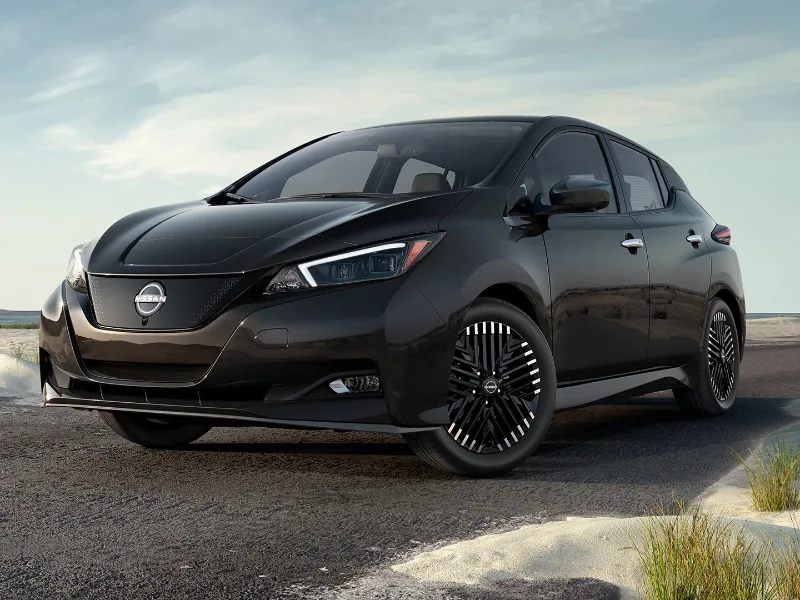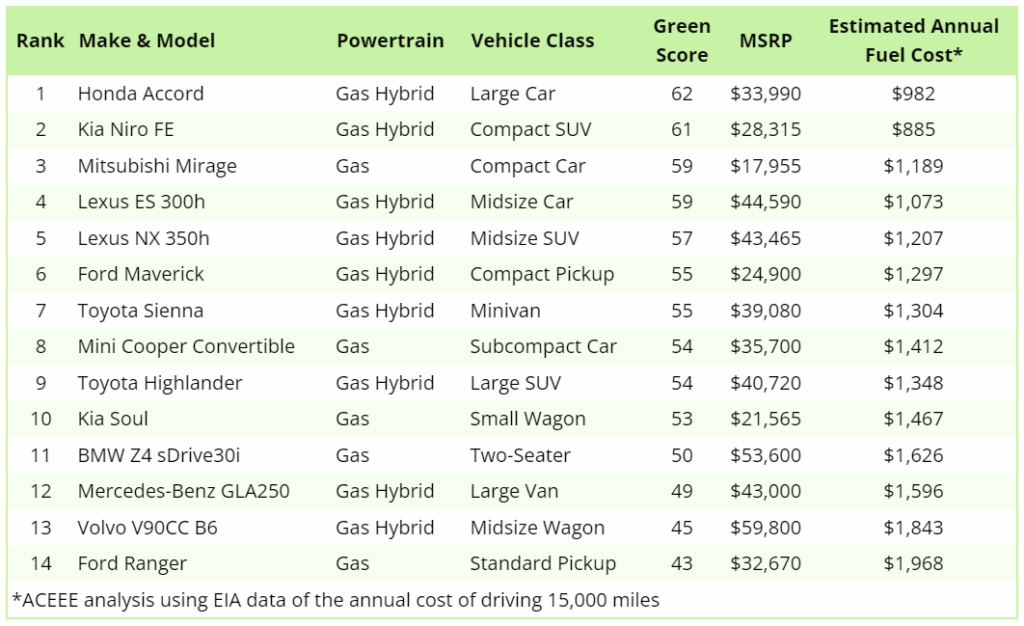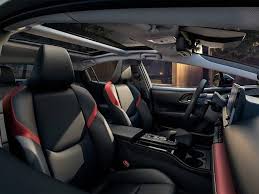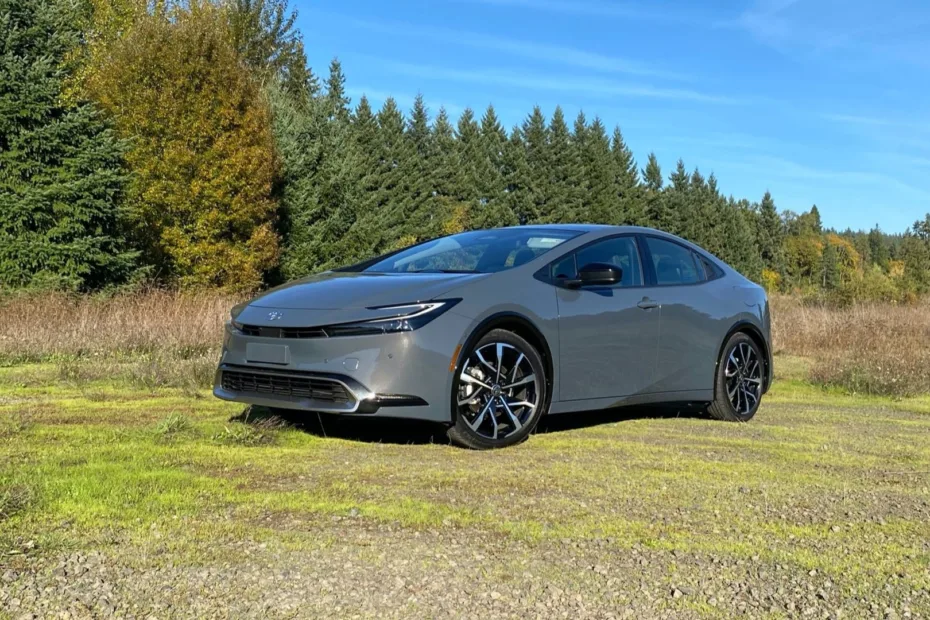GreenerCars is an annual assessment of every new model in the U.S. light-duty vehicle market, by The American Council for an Energy-Efficient Economy (ACEEE). It is based on a lifecycle assessment of the greenhouse gas and criteria pollutant emissions from the production, use, and disposal of each vehicle.
Unlike other evaluations of the health and environmental impact of vehicles that rely solely on fuel efficiency, GreenerCars scores every vehicle on its entire impact and is the most effective way to compare gasoline-powered vehicles to electric vehicles.
In addition to assessing the emissions from fuel burned in a vehicle’s engine, Green Cars assesses the upstream emissions generated by electricity used by a vehicle, emissions produced when mining and processing minerals for batteries, and emissions from manufacturing vehicles and vehicle components.
Green scores are generated for each model and can be used to assess how green a vehicle is. Users can also assess vehicles based on their class so that they can make the greenest purchase that meets their mobility needs.

The Greenest List highlights the 12 highest-scoring models this year, the Greener Choices list includes a variety of high-scoring conventional vehicles, and the Meanest List identifies the 12 worst-performing mass-market models. The average fuel cost of a vehicle on the Greenest List is a fifth of the average fuel cost of a vehicle on the Meanest List, showing that greener options can also be more affordable.
Greenest List
The electric vehicles on the Greenest List had the lowest fueling costs because of their higher efficiency. EVs and plug-in hybrid electric vehicle (PHEV) models topped the list.

Greener Choices
The 2024 Greener Choices list includes model year 2024 cars that are available nationwide with among the lowest environmental impacts in each vehicle class but that didn’t make the Greenest List. The Greener Choices list does not include EVs (including PHEVs) because some drivers do not have adequate access to EV charging.

Meanest List
The Meanest List of the worst-performing mass-market automobiles consists of primarily large, inefficient gas guzzlers, with seven SUVs, three trucks, one sports car, and one sedan. The Meanest List includes an EV for the first time, demonstrating that size and efficiency, not just fuel source, are important factors in a car’s environmental impact.

The above article has been published by The American Council for an Energy-Efficient Economy www.aceee.org/greener-cars (ACEEE).
eMotion Take
The evaluations are done on the costs based in the US, especially on their energy mix which may apply to some other countries. In places like Sri Lanka energy is based on rooftop solar in most cases and the impact on the environment is very low. Furthermore, the low-cost budget cars make a massive difference against the higher motor and battery capacity newer cars. Also the range and anticipated usage matter in defining the environmental and economic benefits, in different driving conditions and terrains.

Prius was there in the list even before but not last year since the model wasn’t available for testing. Prius PHEV lost its way in design as well to many markets, but it’s back with better. While Toyota improving the driving experience as well as the look of this latest Prius, it’s not entirely the return to form in all the ways you might expect of a Prius the auto experts who tested the car say.
This Prius essentially carries over its efficiency numbers as a hybrid with up to 25 km, per liter, while offering an incremental improvement in electric range up to 72 km as a PHEV.
It is interesting to note Nissan Leaf is still in the 4th place, after a decade of existence.
